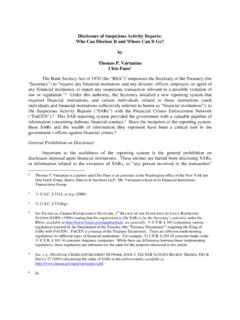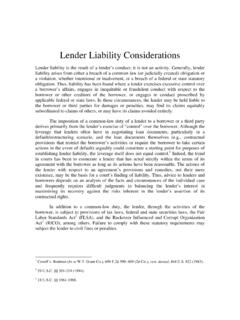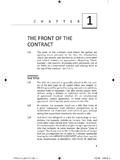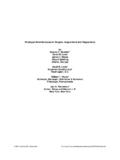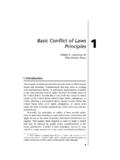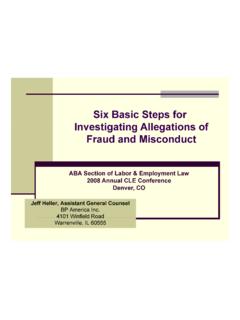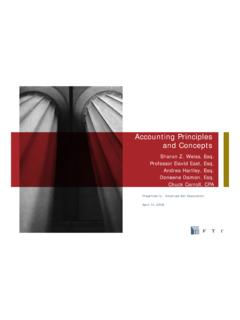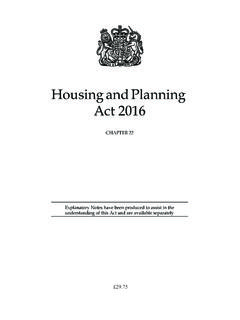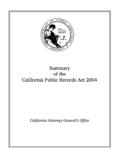Transcription of Affordable Housing—1 An Intimate History
1 Chapter 1. Affordable housing . An Intimate History 1. Charles L. Edson In 1918, Congress made the United States Ship-Building Corporation the first federal entity in the Affordable housing field by authorizing $100 million to build 25 war-worker projects providing more than 5,000 homes. Previously, in 1892, Congress had authorized $20,000 for a federal investigation of slum con- ditions. And in 1908, President Theodore Roosevelt appointed the President's housing Commission to look into the need for decent housing for low-income Americans and recommended federal aid. Nothing came of either This bit of History reveals a pattern of housing programs and funding that continues to this day: Affordable housing is not deemed to be an end in itself, but a way to serve another purpose for example, to house defense workers during the world wars, to create jobs during the Depression, to provide an antidote to civil unrest in the 1960s, or to stimulate the economy in today's Great Recession.
2 This will not be a chronological History . Rather, it primarily addresses key areas: public housing , nonprofit and private-sector programs, tax incentives for housing , housing preservation, and low-income home ownership. Fair housing , a subject of crucial importance, presents a long, separate, and important story that cannot readily be summarized I participated in the legislative struggles that produced the programs to be discussed, except for the 1937 enactment of public housing when I was only two years old. Although this History will be accurate and factual, the interpretations and perspectives included are those of the author. If any are controversial and serve to keep the reader awake, so much the better. 1. BARRY G. JACOBS, KENNETH R. HARNEY, CHARLES L. EDSON & BRUCE S. LANE, GUIDE. TOFEDERAL housing PROGRAMS 3 4 (Bureau of National Affairs, Inc.)
3 1986) (1982). 2. See Chapter 8, Part Federal Fair housing Act and related topics, p. 230 et seq. herein. 3. 4 Chapter One I. THE PUBLIC housing PROGRAM. A. The Beginning As World War I produced the United States Ship-Building Corporation, the Great Depression produced public housing . Significantly, Congress did not address decent housing for low- income Americans as its first priority in the New Deal era. The primary concern was to stabilize the housing market for middle-income Americans by creating a mechanism to en- courage banks to lend money for home purchases. The first seminal piece of housing legisla- tion, the National housing Act of 1934,3 created the Federal housing Administration (FHA), now an integral part of the Department of housing and Urban Development (HUD), to insure single-family housing loans. Congress amended this act through the years to insure multifam- ily projects and, as will be later discussed, added some subsidy programs to the mix.
4 But basically FHA should be viewed as an insurance company with middle-class housing its prime concern. After a two-year struggle, Congress enacted the United States housing Act4 in 1937, creating the statutory structure for public housing for many years the nation's prime afford- able housing effort. Its structure remains intact to this day. Catherine Bauer, a regional plan- ner turned lobbyist, led the legislative effort through the Labor housing Her efforts led to Senate passage by a 64 16 margin, with equal success in the House. Very significantly, the statutory preamble lists job creation as the act's first purpose, followed by providing decent Again, this is an apt example of Affordable housing being a means to the more popular end of job creation. The act created the United States housing Authority (USHA) to administer the program and placed it in the Interior Department under the crusty New Dealer, Harold The USHA soon gave way to the United States Public housing Administration (USPHA) as the program administrator.
5 USPHA became a constituent of the housing and Home Finance Agency (HHFA) and, along with FHA, the Urban Renewal Administration, and the Commu- nity Facilities Administration, morphed into the Department of housing and Urban Develop- ment in Because the Sixth Circuit ruled that federal government housing ownership under the Public Works Administration was unconstitutional,9 the act directed that the pro- 3. National housing Act of 1934, Pub. L. No. 84-345, 69 Stat. 646, 12 1701 (2010). 4. United States housing Act of 1937 (Wagner-Steagall Act), Pub. L. No. 93-383, 88 Stat. 653, 42 1437 (2010). 5. H. PETER OBERLANDER & EVA NEWBRUN, HOUSER: THE LIFE AND WORK OF CATHERINE BAUER 118. (UBC Press 1999) (Houser is perhaps the raciest housing book ever written. In addition to describing Bauer's titanic efforts to get the bill passed, it also details her affair with Lewis Mumford, one of the most renowned urbanists of the early 20th century).
6 6. United States housing Act of 1937, Pub. L. No. 93-383, 88 Stat. 653, 42 1437. (2010). 7. OBERLANDER & NEWBRUN, supra note 5, at 155. 8. housing and Urban Development Act of 1965, Pub. L. No. 89-117, 79 Stat. 451, 12 1701, Sec. 101 (2010). 9. United States v. Certain Lands in Louisville, Jefferson County, Ky., 78 684 (6th Cir. 1935). Affordable housing An Intimate History 5. gram be administered by local public housing authorities, now 3,148 in number, owning million units of public Congress authorized the USPHA to make loans, capital grants, and annual contributions to the local authorities. A hybrid financing mechanism evolved. The local public housing authority (PHA) would issue tax-exempt bonds to finance the projects' construction. The federal government would make annual contributions in amounts sufficient to amortize the principal and interest on the bonds.
7 A New York City bond lawyer named John Mitchell (who later became the Attorney General under President Nixon) created this structure. Project tenants would pay rent in an amount necessary to cover operating expenses. This arrangement worked well in the early days of the program. Tenants were mainly nuclear families who had fallen on hard times during the Depression. Then came World War II and a requirement under the Lanham Act11 that PHAs house defense workers in their projects. After the war, returning veterans populated the projects at a time of severe housing shortage. In virtually the only time that housing was at the top of the political agenda, Con- gress, in the housing Act of 1949,12 expanded the program dramatically, authorizing up to 810,000 units, and set the goal of a decent home and a suitable living environment for all Americans.
8 13 Thus there was a tenancy that could pay rent equal to operating expenses. Things changed dramatically by the mid-1960s. Relatively easy home-ownership terms sucked middle-class families out of the projects to be replaced by single-parent households, many on welfare. PHAs had to charge rents to cover operating expenses, and these rents jumped to 60 70 percent of a tenant's income in many cases. In response, Congress capped tenant rent at 25 percent of income (increased to 30 percent in 1981), but this necessitated federal payment of operating subsidies to the PHAs, accomplished by an amendment to the act by Senator Edward Brooke of Massachusetts, popularly known as the Brooke Amend- As the federal operating subsidy amount began to spiral steeply upwards, pundits claimed that there was one too many letter o s in Brooke.
9 As public housing tenancy has evolved, so have income limits. Up until 1981 PHAs had leeway in setting eligible tenants' income generally below 80 percent of median. In that year, Congress limited public housing occupancy to lower-income families, that is, families with household income less than 50 percent of median. Congress, reacting to the desperate need of very poor families, required that 40 percent of public housing units be reserved for families below 30 percent of median , very low B. Public housing Evolves Through the late 1960s, public housing was administered in a conservative fashion, both by the Public housing Administration and, after 1965, by HUD. Public housing was always 10. ALEX F. SCHWARTZ, housing POLICY OF THE UNITED STATES (Routledge 2010). 11. Lanham Public War housing Act, ch. 862, 54 Stat. 1125 (1940), 42 1521 (2010).
10 12. housing Act of 1949, ch. 338, 63 Stat. 413, 42 1441 (2010). 13. Id. at 2. 14. housing and Urban Development Act of 1969 (Brooke Amendments), Pub. L. No. 91-152, 83 Stat. 379, 12 1701 (2010). 15. housing and Community Development Amendments of 1981, Pub. L. No. 97-35, 95 Stat. 384, 42 8107 (2010). 6 Chapter One on shaky political ground, as exemplified by a successful 1970 California initiative that re- quired voters to approve new public housing in their jurisdiction. The United States Supreme Court upheld the requirement against a constitutional challenge in James v. Also, public housing authorities were very wary of the emerging tenant rights movement. It took a Supreme Court decision17 to get a recalcitrant PHA to follow a HUD directive to inform a tenant of the reasons for her eviction from a public housing project.
